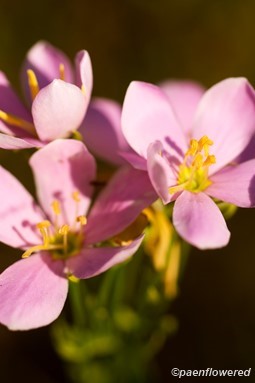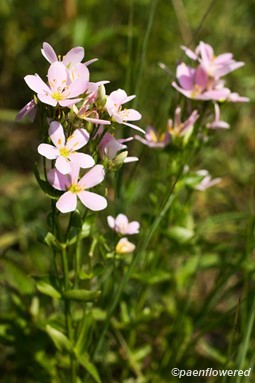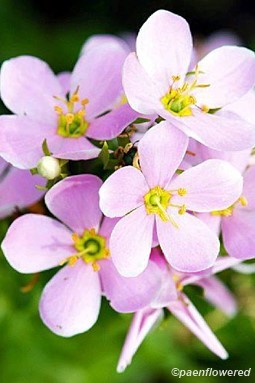Sabatia angularis
Sabatia angularis rose pink
This native species is a member of the gentian family. The flowering branches are thick and paired. The flowers have five petals and vary in color from magenta to rose pink to white. The petals unite near their base. There are five stamens with yellow anthers. When fully opened the flowers aree 1 to 1 ½ inches in diameter. The bases of the petals are yellow and form a star pattern with a red border. The ovary is superior with a divided style. The 5 green sepals are about half the length of the petals and form a star pattern. The flowers open up during the day and close at night. They are fragrant. Long-tongued insects like bumblebees and butterflies are the primary pollinators.
The fruit that forms in the fall is a capsule that contains many tiny seeds. The stem is 4-angled and smooth. The leaves are broad and also opposite. They attach directly to the stem. The root system is fibrous and shallow. The plant grows 1-3 feet high and is found in moist fields and along roadsides. It is found from Wisconsin, Michigan, southern Ontario, New York and south. The blooming period is July to September. This species is biennial, though some sources call it an annual. The first year it produces only a rosette of basal leaves. The flowering stems grow the 2nd year. It is also called by the common names American centaury, bitterbloom, or square-stemmed sabatia.
Habitat & Range
Occasional in open woods, fields, marshes, and moist meadows.
Mostly found in the south of the state.
| EMP: | FAC |
|---|---|
| NCNE: | FAC |
Phenology
Flowers July to October.
Plant Codes
S-rank: No rank
G-rank: G5 (Secure)




Comments
Have you spotted this plant in your area? We'd love to hear about your experience! Share your comments or questions about the plant below. Comments are moderated before posting.